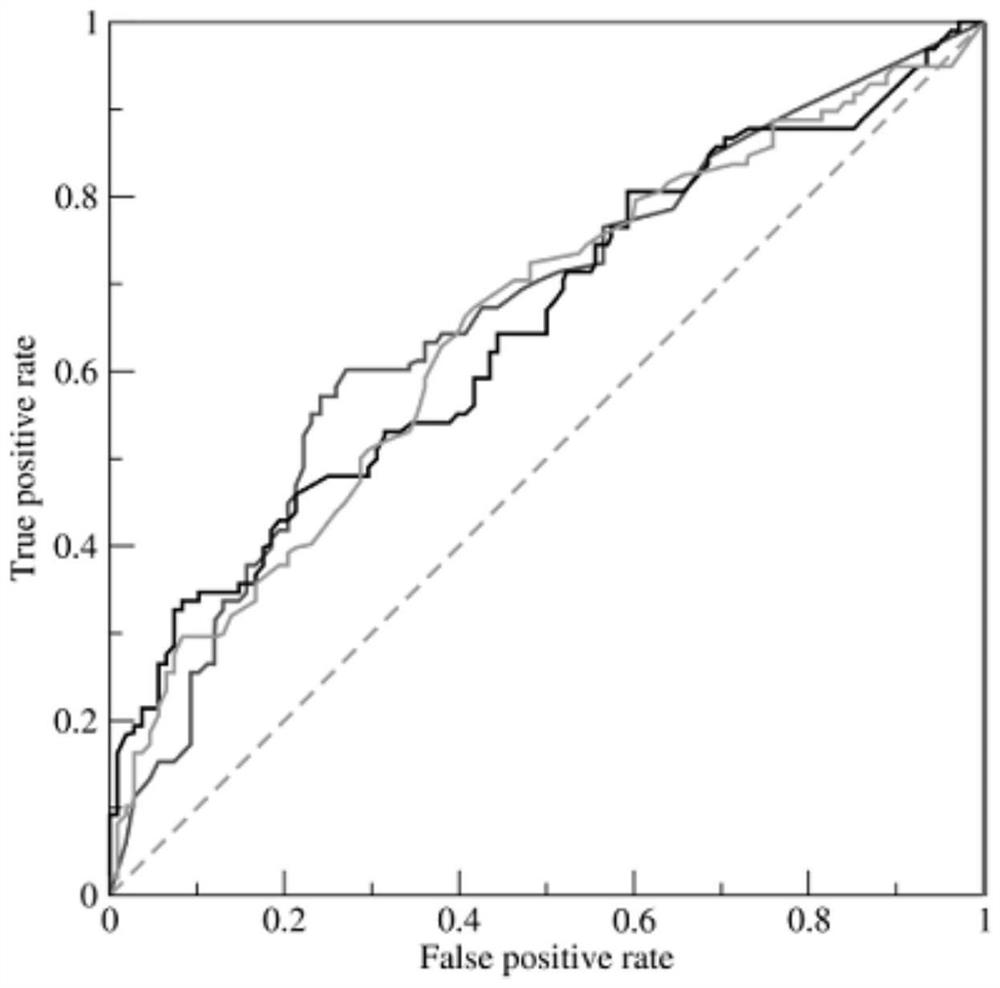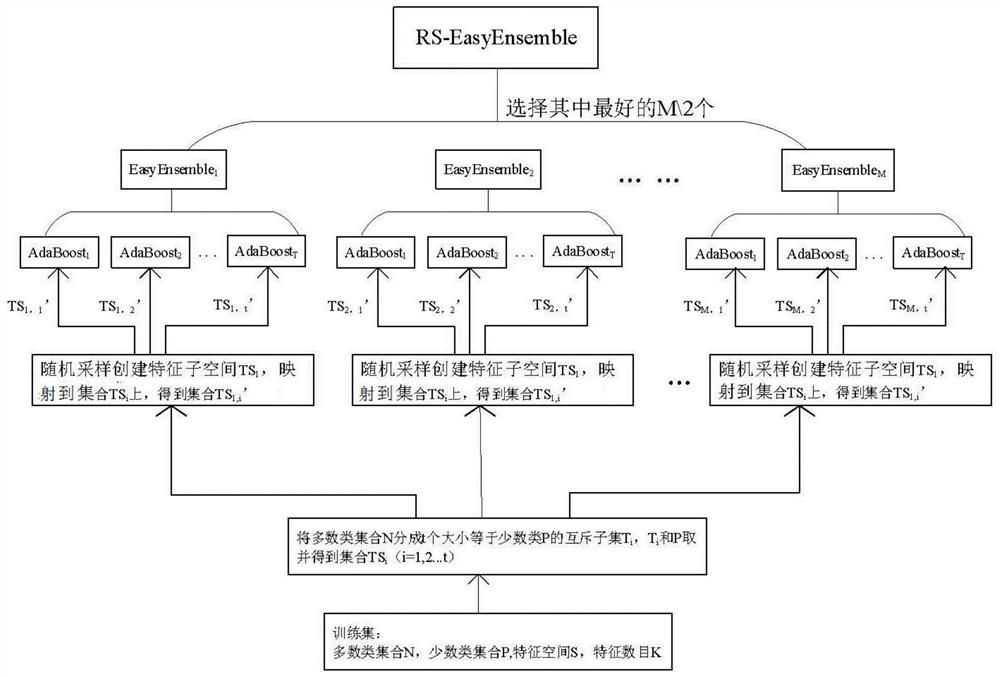A screening system for aortic dissection based on stochastic subspace ensemble learning
A technology of aortic dissection and random subspace, applied in the fields of informatics, medical simulation, medical informatics, etc., can solve the problems of low efficiency of aortic dissection diagnosis, complex process, low missed diagnosis rate, etc., to overcome other injuries and side effects , Improve the accuracy and reduce the cost of inspection
- Summary
- Abstract
- Description
- Claims
- Application Information
AI Technical Summary
Problems solved by technology
Method used
Image
Examples
Embodiment Construction
[0098] In order to further illustrate the implementation of the present invention, the following experiment is used to verify the beneficial effects of the present invention:
[0099] The data sets used in this experiment came from Xiangya, which includes information collected by 53,213 patients as a sample. The total number of patients with aorta is 802 people, 5,2411 non-patients, namely 802 samples, reverse sample 5,2411, the ratio of the atrial and the antique sample is 1: 65, and 85 indicators are extracted as the sample feature.
[0100] 1) The data set is divided into 7 sizes similar mutual exclusive, each subset ensures distribution consistency, that is, the layered sampling from the data concentration, each time the panel of six subset is used as a training set, rest That subset was used as a test set for 7 training and testing;
[0101] 2) In the training concentration, set a small number of patient samples to p, most types of non-patient samples are n, | P | << | N |, s...
PUM
 Login to View More
Login to View More Abstract
Description
Claims
Application Information
 Login to View More
Login to View More - R&D
- Intellectual Property
- Life Sciences
- Materials
- Tech Scout
- Unparalleled Data Quality
- Higher Quality Content
- 60% Fewer Hallucinations
Browse by: Latest US Patents, China's latest patents, Technical Efficacy Thesaurus, Application Domain, Technology Topic, Popular Technical Reports.
© 2025 PatSnap. All rights reserved.Legal|Privacy policy|Modern Slavery Act Transparency Statement|Sitemap|About US| Contact US: help@patsnap.com



